#chicago school architecture
Text

4 notes
·
View notes
Photo
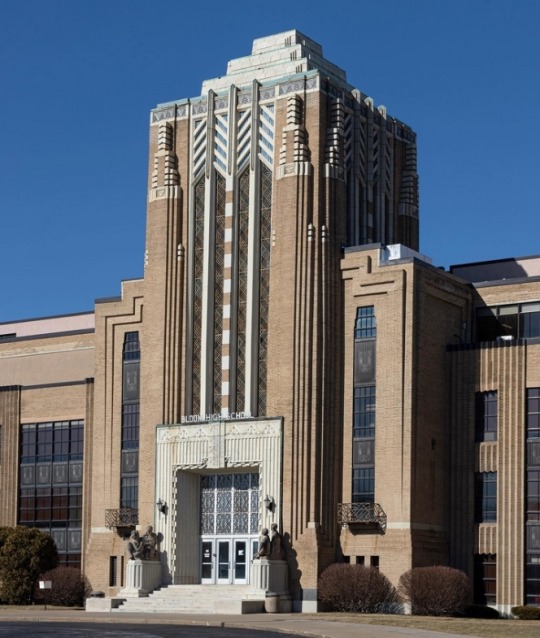
312 notes
·
View notes
Text
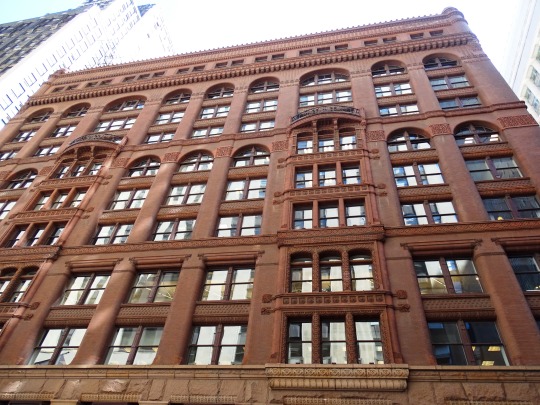


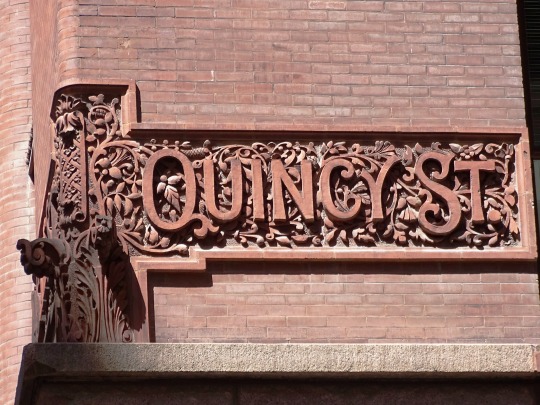
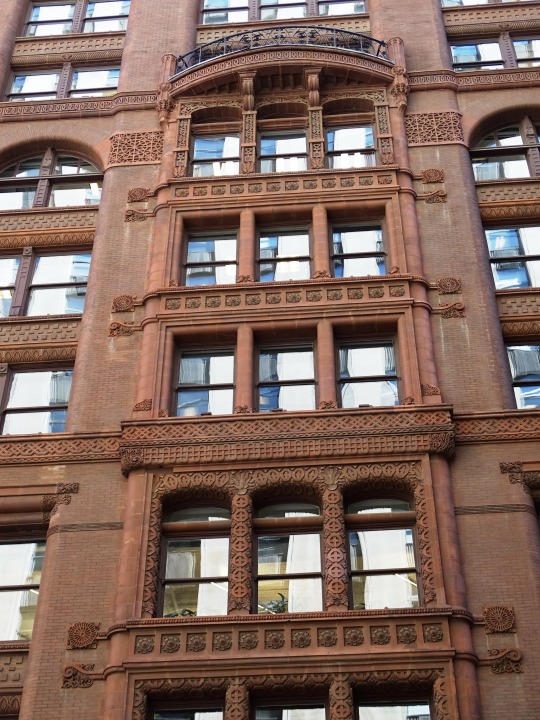

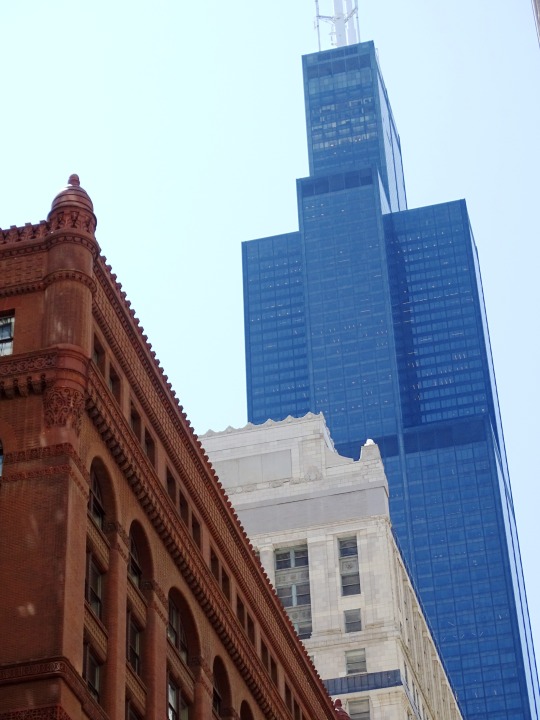

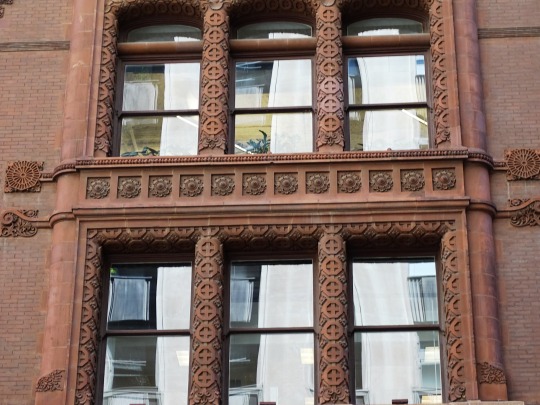


The Rookery Building was listed as a National Historic Landmark on May 15, 1975.
#Rookery Building#National Historic Landmark#15 May 1975#anniversary#US history#Sears Tower#Willis Tower#209 South LaSalle Street#Burnham & Root#Chicago school#Daniel Burnham#John Wellborn Root#façade#exterior#the Loop#original photography#summer 2019#travel#vacation#tourist attraction#landmark#detail#Illinois#Great Lakes Region#Midwestern USA#cityscape#architecture#USA
2 notes
·
View notes
Text


Outside Crown Hall for the 1964 Seniors exhibit
2 notes
·
View notes
Photo


two photographs of Chicago’s Marina City as published in the June 1967 issue of National Geographic magazine. The apartments are pie-shaped residences and the lower 20 floors were designed for mixed commercial use and for parking
#chicago#architecture#residential architecture#chicago school#marina city#1967#national geographic#dancers#formfollowsfunction
26 notes
·
View notes
Text

Ames Monument 1882 - Architect Henry Hobson Richardson
Standing in an open western grasslands stands a 60 foot Cairn memorializing the financiers of first transcontinental railroad. The Monument itself stands on the highest elevation of the original route, however, the significance of this Monument is not the achievement of the railroad but instead the contribution to a material shift which had influence on modern architecture.
Richardson was amoung the 'first proudly' American Architects who sought to create their own distinct style from European influence, later refered to as the Chicago school. The colonial nature of the American nation, as well as their art/architectural stylings, had primarily derived from the Old World. New World architects began to grow increasingly interested in exploring the material resources in the vast territory now easily accessible for settler claim.
The Cairn Monument utilizes local granite blocks which match the surrounding landscape and seeks to meld old world classical architecture with a vernacular material language. At the time there was an ongoing debate surrounding craft and industry, discovering a dynamic of merging the two became the next big movement in architecture. Following this usuage of new material language Richardson applied these theories to his Marshal Field Wholesale Store (1885-87) in Chicago: Old theories of design practice utilizing new technology and ideas. this cairn serves as such a precursor for the coming architectural stylings which inspired aspects of the Prairie School, Arts and Crafts Movement, and Internation style.
Ph: Wyoming State Historic Preservation Office
#henry Hobson Richardson#chicago school#arts and craft movement#industrial architecture#modern architecture#american architecture#monument#architecture at the end of the world
2 notes
·
View notes
Text

"Yes, you read that right: Chicago is spending $33 million to build fake housing and commercial buildings in an overpoliced community that could really use their actual, real-life equivalents. No Cop Academy organizer Destiny Ball laid it out plainly to Block Club Chicago: “To find out that they’re building a scenario village when there are thousands of people, homeless, with nowhere to go … it’s sickening.”
Architecture sometimes lays bare the contradictions in urban life, but rarely does it do so this explicitly, if not mockingly. A first phase of the training campus is nearly done, and the “tactical village” will begin construction this summer. The campus, which rises on the site of a former rail yard, will replace seven facilities currently in use. The second phase will be built by a joint venture of Berglund and Brown & Momen. The City’s website lists the design architect as DLR Group. The company recently published a blog post in which Andrew Cupples defended its work on juvenile justice systems, claiming that DLR remains “undeterred in the belief that design excellence contributes to better outcomes for youth who enter the justice system.”
“Justice system,” to this critic, reads as a remarkable euphemism for a place to detain children. Incredibly, the City lists the project as part of Mayor Lori Lightfoot’s INVEST South/West platform which seeks to direct about $1.4 billion in funding to previously underdeveloped neighborhoods.
The City neglects its citizens—especially its Black and Brown ones—before policing them with militarized tactics. This is, after all, the police force that was found to be using “black site” tactics—essentially kidnapping and torturing civilians at Homan Square, a property it owned on the West Side—until an exposé in The Guardian in 2015 spelled its demise. This is the police force whose officers shot 13-year-old Adam Toledo to death in 2021 and paralyzed another unidentified 13-year-old boy just a few weeks ago. These are the law enforcement officers who have made arrests in only 6 percent of rape cases. Per Alex Vitale’s book The End of Policing, this is the police department that arrested 8,000 Black schoolchildren, more than half of whom were under 15, in 2013–14 alone.
Chicago suppresses funding for housing, schools, environmental remediation, public health, and transit, but it generously funds cops. This is not only ineffective, given the statistics and reality of police brutality, but immoral.
Any architect who participates in realizing the carceral program of police surveillance and terror is complicit. Architects often characterize their work as impartial, but the reality is that the form of the built environment is regularly weaponized by those in power. Architects are moral actors who have the agency—individually, but especially collectively—to see a project like this and decline to participate.
At times, activism comes in the form of saying yes to certain advances, but in this case it more powerfully comes in saying no. This denial of service can come in the form of whistleblowing to journalists, organizing political resistance among your peers, or finding a new job. After George Floyd’s murder in 2020, when Michael Ford (the hip-hop architect) learned that his then employer SmithGroup was to work on civic buildings with holding facilities, he left. In the fall of 2020, AIA New York attempted to discourage members from working on spaces of incarceration. The work of Colloqate explicitly demands the end of architects working on behalf of police and provides alternative solutions for reallocating police funds toward endeavors rooted in community building and racial justice.
Architecture exists at the all-important nexus where political ambition is given form. Resistance to terrible carceral projects from architectural firms matters—if no one draws the plans, the efforts stall. Sure, someone else can do it, but the broad systemic woes of capitalism don’t excuse us—mere individuals—from living ethical lives. It is unethical to work on a project that will be used to oppress and terrify Chicagoans, just as it is a project of criticism to be explicit about architecture’s role in surveillance, police expansion, and, by extension, urban policies that govern by force, not by support. So, to the leaders of architecture offices who are currently overseeing construction documents for a fake strip club in western Chicago, I see you. The architecture world sees you. You can and should do better than this."
-Kate Wagner is an architecture critic and a journalist.
4K notes
·
View notes
Text
I realize this is a weird question for a Sunday morning, but does anybody have particularly incisive articles about the tension between architectural preservation and the need (because I do think it's a need!) for new buildings, new spaces, and revising the landscape of a city?
I'm watching a piece on Richard Nickel, who is almost single-handedly responsible for photographing the work of Louis Sullivan and other architects of the Chicago Prairie School, prior to their demolition in the 60s. It's a great piece, and I love Nickel's photographs, but as someone who knows only the Chicago that sprang up in the wake of Nickel's, I can't help but wonder if there's more than simple aesthetics at play here.
#like...I love the driehaus museum! house museums are very cool.#if they manage to rehab the lu palmer mansion and muddy waters' house on the south side I will be ecstatic#but also people need places to live and work. these places need indoor plumbing and laundry rooms and kitchens.#architecture is great but so are grocery stores.#I love fancy buildings and history but you can't trap a city under glass like that. that's not how it works.#..............anyway hope everybody else is having a normal one and not grappling with existential questions of historical memory at 9am
103 notes
·
View notes
Text
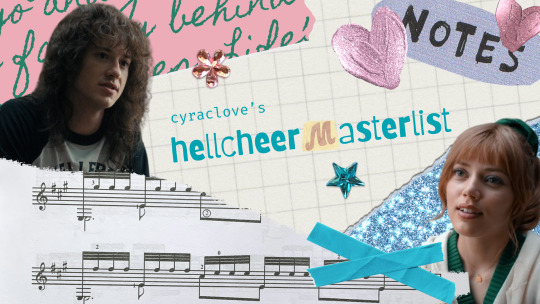

dirty work [Rated E]
A middle-aged Chrissy and Eddie make good use of their empty house while their teenaged children are gone. Chrissy takes advantage of Eddie being handy around the house.
scratching at the outlines of you [Rated E]
A direct sequel to mixing drinks and messages. Eddie and Chrissy navigate their new situationship turned relationship. Chrissy runs into a familiar face at Eddie’s bar.
still awake, playing chase with the sunrise [Rated T]
The Party hunkers down at Eddie's trailer to map out their battle plan. Max witnesses Eddie and Chrissy share a moment in the kitchen while everyone else is asleep.
the feeling in it [Rated E]
Eddie and Chrissy are in their 40s, watching their two teenagers go to prom and wondering where the time went.
lick the fuzz right off the peach [Rated E]
Chrissy asks Eddie about a certain activity they've yet to try. His head explodes.
mixing drinks and messages [Rated E]
At Robin and Nancy's suggestion, Chrissy tries her hand at Tinder after dumping Jason for the sole purpose of having a one night stand. When her date stands her up, the Chicago Transit Authority takes fate into its own hands.
honeycomb [Rated E]
Chrissy stumbles upon Eddie and another classmate alone in the woods. She knows she shouldn't, but she can't help but stay and watch.
and all my ghosts are with me [Rated M]
Chrissy copes with her grief after Eddie sacrifices himself to help The Party defeat Vecna. El and Max show up on the day of his funeral with news that no one can believe.
wishing, wanting, yours for the taking [Rated E]
After following doctor's orders for six weeks, Chrissy starts getting antsy about getting back into bed with Eddie after having their first baby. An unexpected change sparks something new for the both of them.
small hours [Rated E]
Eddie never thought that he could be a morning person until moving in with Chrissy. There's just something magical about Chrissy in the morning...

my little bit of something blue [Rated E, Complete]
Chrissy and Eddie reconnect after graduating from high school when asked to be members of Jonathan and Nancy's wedding party.
angels in the architecture [Rated E, Complete]
Since falling in love in high school, Chrissy and Eddie’s paths have diverged and they’ve been living very separate lives. Ten years later, they meet again by chance at a Christmas party thrown by a notable Chicago socialite, the choices that they’ve made coming along with them.
the light, the heat [Rated E, Complete]
What might have happened if Chrissy had lived and the Hawkins crew had to drive to Nevada to find El. One getaway motel mix-up later, Chrissy and Eddie come face to face with the feelings they've been trying to ignore.
#YAY HERE IT IS#click on a fic title to see the teaser and link to ao3#thank you thank you for the love on these#i love y'all#hellcheer#cyraclove writes#writers on tumblr#fanfiction#stranger things#eddie munson#chrissy cunningham#eddissy#eddie x chrissy#munningham#fanfic masterlist
61 notes
·
View notes
Text
i was taking photos of the seagram building with a friend and came up to the atrium to see what the plaque said while talking about the decorative I-beams on the mullions where we found an older man smoking a cigar who said do you know how he made his money? who? seagram? yeah, do you know how they built it? samuel bronfman made his money in the grain trade in ukraine shipping from odessa, maybe you've heard of it, back in the day it was also famous, emigrated to canada because he thought winnipeg would be the new chicago. during prohibition he started distributing whiskey to bootleggers in new york. real filthy guy, real crass, did this skyscraper to launder the family name. people don't do that anymore. a building like it could've only been built in new york because canadians are fundamentally a lacking people without a sense of aesthetics, a grey people in a grey country, the only real city there is montreal, this is the only country with a functional economy. you see biden and trump? where's the vision? i'm 80, i've worked in this building for 50 years. i went to high school in canada with his bronfman's grandson but i'm a new yorker. this is the only real city in the world. we don't celebrate architects any more, do we? what do we make these days, anyway? chicago banned oil and gas use in new design construction. that's crazy, you need oil. ford tried to do EVs but they went back to gas. you have to trust the game plan. it's like ford losing money for a few years, you trust the model and you'll start making money again. the economy is going to the moon right now, people should be jumping for joy in the streets because of biden! but there's an imbalance. do you know how much my parent's home's value went up in the last 15 years? 1,400%. why are you so interested in architecture, anyway?
41 notes
·
View notes
Text

#chicago architecture#chicago school architecture#civic and commercial architrcture#chicago#Randolph Street#chicago theater district#Randolph and State
2 notes
·
View notes
Text

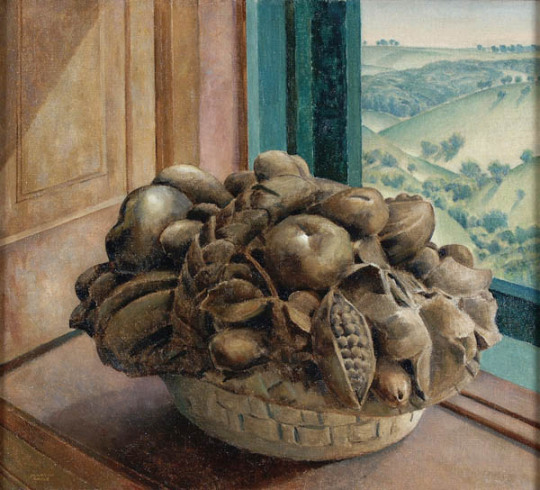


Marvin D. Cone (1891-1965) was born and raised in Cedar Rapids, where in 1906 he began a lifelong friendship with Grant Wood. He graduated from Coe College in 1914 and then studied at the School of the Art Institute of Chicago. World War I interrupted his studies, and Cone left for France in 1917, where he served as an interpreter. In 1919, he studied for about five months at the Ecole des Beaux Arts in Montpellier, France. When he returned to Cedar Rapids that year, he continued to pursue his interest in art. He considered commercial art, but chose instead to accept a position teaching French at Coe College for the 1919-1920 academic year. Upon his return to Cedar Rapids, Cone quickly renewed his friendship with Grant Wood and resumed his active involvement with the local art association (now the Cedar Rapids Museum of Art). Cone and Wood went abroad in the summer of 1920, hoping to improve their technical skills. The visit proved influential, resulting in a stunning series of impressionistic views of picturesque cityscapes and landscapes, Paris streets and gardens, and the French countryside. Architecture and landscape fascinated Cone for the rest of his life. He returned to Paris with his wife Winnifred in 1929 and traveled to Mexico in 1939. Cone lived all his 74 years in Cedar Rapids, Iowa, where he married, raised a family, and for more than four decades taught art at Coe College. Although he never achieved great fame, he was highly respected by his contemporaries.
https://www.crma.org/.../permanent-collections/marvin-d-cone
43 notes
·
View notes
Video
The Railway Exchange Building by Paul Nicholson
Via Flickr:
St Louis Architecture The Railway Exchange Building is an 84.4 m (277 ft), 21-story high-rise office building in St. Louis, Missouri. The 1914 steel-frame building is in the Chicago school architectural style, and was designed by architect Mauran, Russell & Crowell. The building was the city's tallest when it opened, and remains the second-largest building in downtown St. Louis by interior area, with almost 1,200,000 square feet (110,000 m2) of space. ( FROM en.wikipedia.org/wiki/Railway_Exchange_Building_(St._Louis) )
7 notes
·
View notes
Text
Omni — Souvenir (Sub Pop)

Photo by Gem Hale
Omni, now four albums in, arches an eyebrow at post-punk. It makes its songs out of an erector set of sharp, shiny guitar parts but leaves the bolts loose, poised to collapse into a clanging pile. Yet lush melodies drape over this rickety architecture, florid sung lines, viscous patters of bass, unexpectedly lyrical swoons of guitar. Brittle cleverness dips unpredictably into unreconstructed romanticism, sarcasm gives way to boy-misses-girl sentiment. The trio—as always Philip Frobos on vox and bass, Frankie Broyles on guitar and Chris Yonker on antic drums—hasn’t exactly softened their edges, just laid a bit of velvet on them.
As a result, there’s something very pop about “Plastic Pyramid,” the song that eavesdrops on Frobos’ super-sexy call and response with Automatic’s Izzy Glaudini (“Are you hydrated baby?” “What are you, a tall drink of water?” etc.). Sure the band tackles the ever-punk topic of consumerism but does so from a soft bed of longing. “Unbox paradise,” stutters Frobos, as his bass pumps up the dance vibe, and he doesn’t sound entirely averse to the process.
“Exacto,” likewise, jitters and freeze frames like a robot at the disco, a steady pulse of bass and rigid, rectilinear structures of drums. But hold on a second, it also pauses for lyrical intervals. “I love you like the first night, for the rest of our lives,” croons Frobos, close to falsetto and very much on the make. Then he undercuts the suavity with an acerbic observation, “Mr. Big Shot always forgets to introduce his wife.”
The word play is often clever in a not-trying-too-hard fashion; you can almost hear the private school drawl in cuts like “F1”which crams multiple photography metaphors into lines about excising people from lives and memories (and snapshots). “You were cropped out of the photo from that long weekend, passed out by the pool, overexposed again,” Frobos rattles off, then comes in for the kicker, “How should I frame this?” It’s good, arch fun, but a little smarmy.
Listening to Souvenir, I can’t help but think of Stuck, the Chicago post-punk-into-no-wave outfits that sometimes refers to itself as “evil Omni.” That’s a funny way to say that it cranks the slashing guitars, the yelps of outrage, the banging drums about three notches tighter than the Atlanta trio. Comparing the two, you might begin to wonder if there’s anything solid behind Omni’s detached cleverness, it’s super clean, super manicured attack. Maybe regular Omni could benefit from a touch of evil.
Jennifer Kelly
9 notes
·
View notes
Text
hm
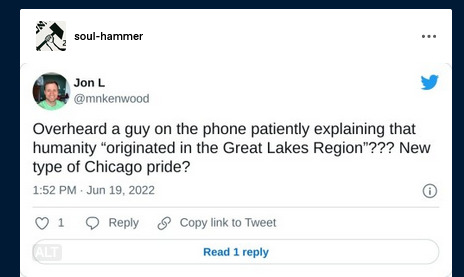
“Chicago pride”? Or white pride, maybe.
Could it have been a reference to the very common/popular white nationalist mound-builder theories from the nineteenth century (and still present today) which tried to explain the existence of Indigenous mound constructions (especially those mounds in Wisconsin, Illinois, and the Great Lakes and Ohio River regions)? The theories proposed that the first human presence in North America was the settlement of people from the Mediterranean or Atlantis, or otherwise some kind of lost race. The theories (argued for publicly by Andrew Jackson, Abraham Lincoln, major scholars, academics, and others) justified imperialist expansion, Manifest Destiny, the Indian Removal Act, etc., and the theories basically helped form the Victorian-era rise of US pop-science among a public grappling with new revelations of geology and deep time/past, and the theories heavily influenced early academic archaeology and medieval studies. Indigenous peoples were considered too “degenerate” to have created such sophisticated architectures, and so a “lost white race” (sometimes proposed to be, like, Paleolithic, Atlantean, Phoenician, Egyptian, Scandinavian, Viking, etc.) must have created the mounds. And throughout the Victorian era and into the Gilded Age, even school textbooks included mentions of this ancient white race/civilization which pre-dated Indigenous presence; the theory influenced notions of Viking settlement in the Great Lakes. The mound builder theories also arguably have found new life in twentieth-century Nazi and contemporary white nationalist interest in “Solutrean” myths and other antisemitic alt-history.
-------
Excerpt:
On December 6, 1830, Andrew Jackson used his second State of the Union address to defend the Indian Removal Act [...]. To his critics who “wept over the fate of the aborigines” [...] Jackson offered an archeology lesson. Any “melancholy reflections” were ahistorical, he said, because the Indians were neither innocent victims nor first peoples, but perpetrators of what Jackson’s modern admirers might call “white genocide.” Jackson knew this because the evidence was everywhere in plain sight. “In the monuments and fortifications of an unknown people, we behold the memorials of a once-powerful race,” said Jackson, “exterminated to make room for the existing savage tribes.” This reference to a “once-powerful race” was not lost on the American public of 1830. Every schoolboy and girl knew it to be the Lost Race of the Mound Builders, believed to be the continent’s original Caucasian inhabitants. From the colonial era into the twentieth century, it was widely accepted that certain earthen structures and burial grounds proved the existence of “white” or Indo-European peoples who settled North America only to be wiped out by the arrival of Jackson’s “savage (Asiatic) tribes.” As the country expanded west, the “Moundbuilders” myth had obvious utility: If the Indians destroyed earlier waves of (white) settlers, their own extermination was just another turn of history’s wheel. In the early 1890s, the U.S. ethnologist Cyrus Vance discredited the theory in a series published by the Smithsonian Institution. But the idea of a pre-Colombian “white genocide” never disappeared. It survived in subcultures, influenced by the occult and Atlantis legends [...]. In 1882 [...] a Minnesota Congressman and writer named Ignatius Loyola Donnelly published Atlantis: The Antediluvian World. The book provided another and more elaborate theory of an Aryan-looking super civilization [...].
Source: Alexander Zaitchik. “Close encounters of the racist kind.” Southern Poverty Law Center. 2 January 2018.
-------
Excerpt:
Although the center of early medieval English studies in the United States was on the east coast […], the first American translation of the poem [Beowulf] was completed at the University of Wisconsin, on the lakeshores of Teejop. [...]. One of the poem’s first American readers was Harvard University professor of modern languages Henry Wadsworth Longfellow. In 1838, Longfellow reviewed Beowulf in the North American Review: “It is like a piece of ancient armour; rusty and battered, and yet strong.” The poem is an old, Gothic war-ruin, haunted by ancient spirits of folk heroes, seemingly foreshadowing Longfellow’s own saga of “Viking America,” the ballad “The Skeleton in Armor” (1841). [...] The public land-grant University of Wisconsin-Madison […] occupies stolen ancestral Ho-Chunk land on the shores of Lakes Mendota and Wingra. On campus are multiple effigy mound groups built by the ancestors of the Ho-Chunk people […]. In the “long nineteenth century,” medieval studies was an important touchstone for antiquarian and archaeological study of Indigenous mounds and the peoples who built them. [...].At the time many amateurs and scholars alike denied Indigenous mounds were the works of First Nations peoples. Some writers identified Indigenous mounds as the works of Phoenicians, Israelites, Hindus, Welsh, or Norse Vikings. [...] [F]orced removals and Indigenous resistance continued in the state [Wisconsin] as late as 1874. The same year, University of Wisconsin professor of Scandinavian studies Rasmus Born Anderson published the popular book America not Discovered by Columbus: A Historical Sketch of the Discovery of America [...].
Source: Maxwell Gray. “Beowulf in Teejop.” Edge Effects. 16 February 2021.
-------
Excerpt:
How could such a “primitive” people of neither Caucasian or Semitic ancestry possibly have constructed such impressive monuments? The answer, clearly, was that they hadn’t. Rather the mounds were the product of another “lost race” – presumably a white one – which had been wiped out by the present “savages.” This kind of racist thinking would eventually lead to the dangerous and genocidal notion that North America had been a white country in antiquity. The Native Americans were not the original inhabitants, but squatters [...]. Over time, this idea developed further and got progressively stranger. Who was the lost white race? Viking explorers – as proposed by frustrated writer Ephraim George Squier? Children of the biblical Nephilim – as suggested by none other than Abraham Lincoln? Refugees from Atlantis – as popularized by Minnesota Congressman Ignatius Donnelly? In 1833 Josiah Priest [...] claimed that the fabled mound builders had been white (and the true inventors of gun powder, not the Chinese!), but that dozens of ancient, old world peoples had visited America before the time of Columbus. This included, but was not limited to, Greco-Romans, Egyptians (who left mummies entombed in secret catacombs in Kentucky), and a Welsh Prince. Amazingly, by 1847, material from Priest’s fictitious pseudo-history had made its way into some American school textbooks.
Source: Justin Mullis. “”The Mound Builder Myth: Fake History and the Hunt for a ‘Lost White Race’” -- book review.” AIPT Science. 31 May 2020.
361 notes
·
View notes
Text
good morning! happy thanksgiving weekly tag thursday!
thank you for tagging me @milkovichrules
if you could switch bodies with anybody for only one hour who would it be and what would you do?
someone who doesnt have a little headache i guess
what's your most trivial / dumbest hot take?
carpeted floors are gross and should be abolished, wood flooring and tile only! rugs are allowable if they are regularly cleaned
shameless related tivial hot takes? i never found jimmysteve attractive even for one single second, not looks personality nothing
if you had to teach a college course what would it be in?
my version of men thinking they could land a plane if they needed to is thinking i could teach literally any highschool class. but college level? i could probably teach a history or english seminar, i went to an art school and could defiantly teach any of the non-architecture art courses I had to take, and i could teach a design studio
season 12 of shameless is suddenly happening and you've been out in charge! what plot point(s) are you gonna make happen?
okay first and formost, lip has had his chance and he blew it hard, multiple times. tami is taking the reigns of their little family for a while
i think debbie got part ways/all the away down to texas and had some kind of rude awakening (sorry yall she needs it) and maybe goes to fiona in florida and they spend a couple weeks repairing their relationship from all the damage that had been brewing for years
carl does buy the alibi with his partner for cheap and finds out anne moved back to Chicago and helps him run it, theres an episode that shows them starting to mirror kev and V and its hilarious
Liam continues to struggle with identity and purpose after Franks death, but his brothers notice how hard he was taking franks death and make an effort to make sure he gets to live more as a kid while also respecting his autonomy
ian and mickey, whew, honestly im working on a couple fics that will expand more on this but they grow together, work together and love each other very much
who would be your godly parent (can be any mythology)?
athena
what's something you love about yourself?
i love helping the people in my life! i am not a touchy feely person but if you need/want something? give me a call we'll get it done and dusted
i also love the way i look and have great style
describe your day in 5 emojis:
🕯🧸🎾🍷🍂
what shameless character do you think you could beat in a fight?
im not even joking , lip
tell us two truths and a lie, we'll try to guess the lie!
do you have a pet/pets? if so, how did they get their name(s)?
please do not come for me, but i am not a pet person. i love animals and i think theyre so cute and funny but theyre also dirty and need space and attention so they do not belong in my tiny apartment
show us a meme (or picture) that captures your essence:
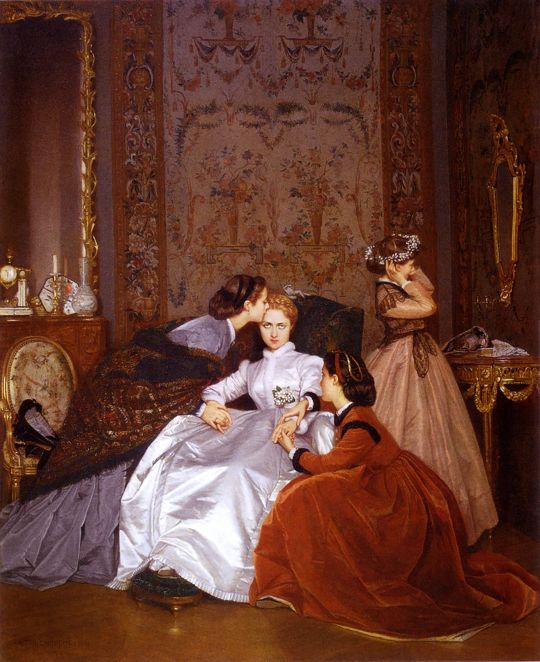
what's your typical coffee / tea / beverage order?
latte with whole milk, hot or iced depending on the season
use a song to describe the last five years of your life:
play along! @jrooc @sweetperversiongirl @thefairytail @stocious @steorie @solitarycreaturesthey @mickeysgaymom @vintagelacerosette
8 notes
·
View notes
